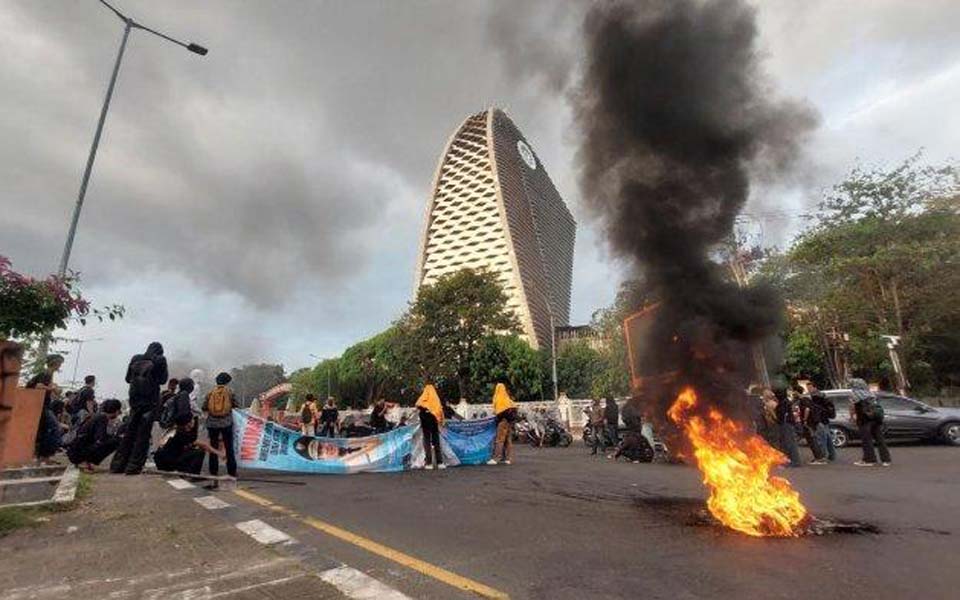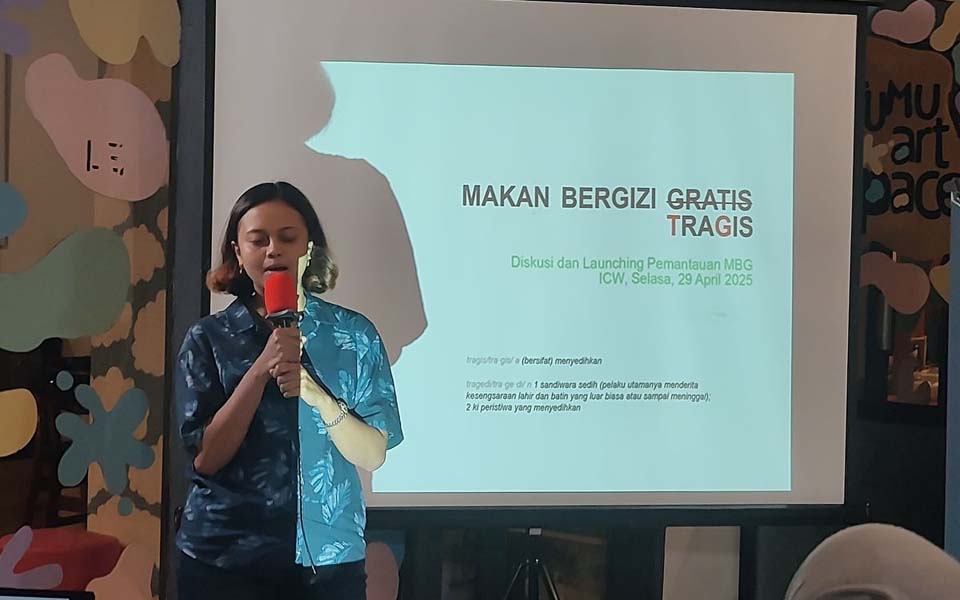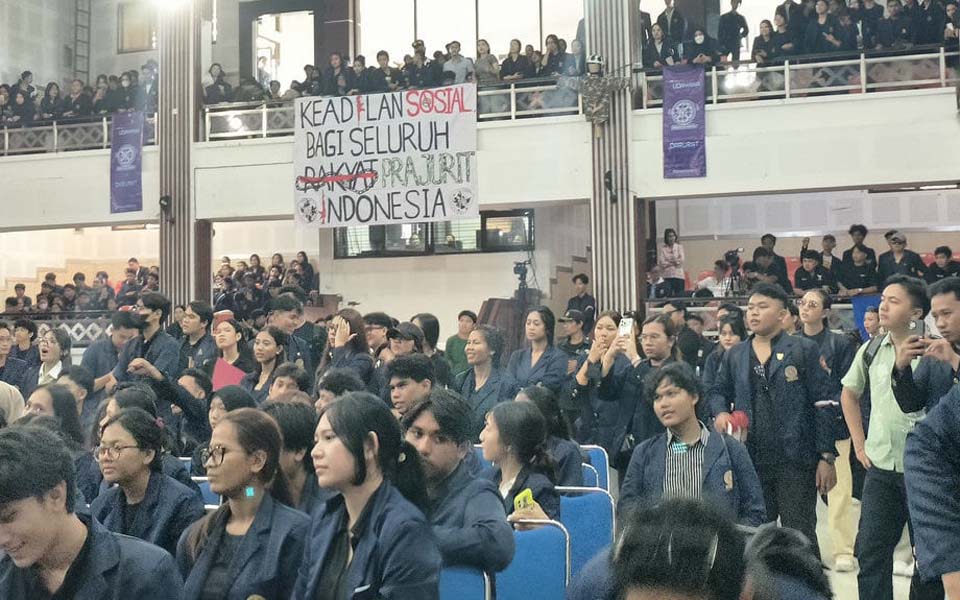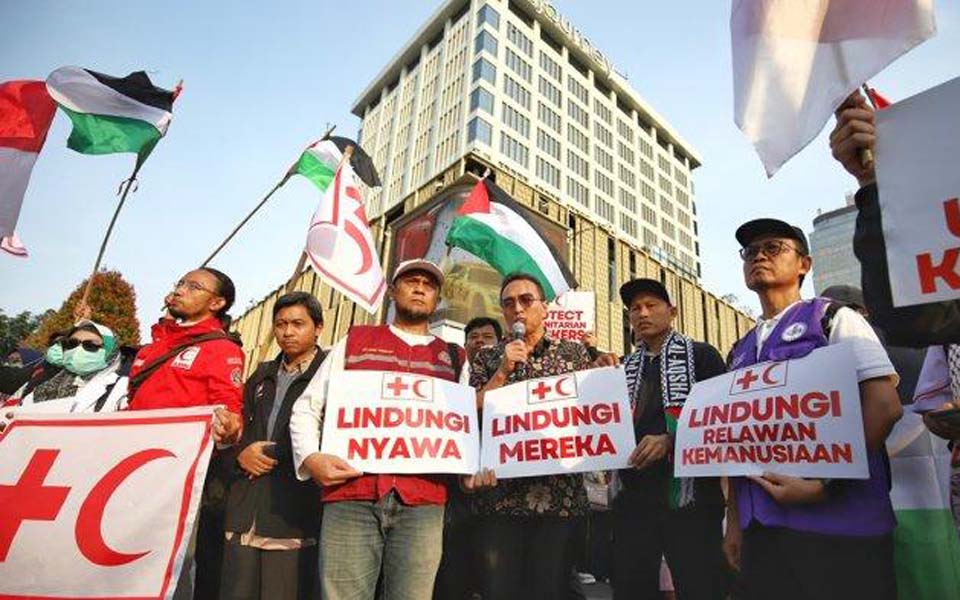Adi Ahdiat, Jakarta – In the lead up to the 2019 Idul Fitri holidays at the end of the fasting month, the Jakarta provincial government destroyed around 18,000 bottles of illegal alcohol (miras) at the National Monument in Central Jakarta on Monday May 27.
The destruction was carried out by Public Order Agency (Satpol PP) officials under the direct supervision of Jakarta Governor Anies Baswedan.
Baswedan took the opportunity to say that the public should take part in assisting officials in controlling the circulation of unlicensed alcohol.
He also said, “We can cut off the supply. But if there is still demand on the streets then no matter how good we are at cutting off supply, the demand will always exist”, said Baswedan on Monday.
Over the last decade or so, the pubic destruction of illegal alcohol has become a routine event for governments in various parts of Indonesia, from Aceh to Bali and Papua.
In total, hundreds of thousands of bottles of alcohol throughout Indonesia are destroyed every year.
But this is not having any impact on reducing alcohol consumption. According to 2018 Basic Health Research (Riskesdas) data, over the last 10 years the average level of national alcohol consumption has in fact increased.
Out of the 35 provinces surveyed, alcohol consumption only declined in three provinces, namely Riau Islands, South Sumatra and Jambi. In the other 32 provinces meanwhile, alcohol consumption has risen.
Bali is the province where consumption has risen most sharply even though every year the Balinese government destroys thousands of bottles of illegal alcohol.
According to 2018 Riskesdas data, the most common type of alcohol consumed in Indonesia is traditional alcohol, followed by beer, local rice wine and arak, whisky and bootleg liquor (oplosan).
In concert with the increase in the national consumption of alcohol, the number of deaths as a result of consuming oplosan has also risen.
According to research by the Center for Indonesian Policy Studies (CIPS), between 2008-2013 there were around 230 deaths as a result of consuming unlicensed alcohol. Between 2014-2018, the number of deaths rose two-fold reaching around 540.
This was revealed by CIPS researchers Hizkia Respatiadi and Sugianto Tandra in a report titled Combating Illegal Alcohol: Policy Priorities in Bandung, West Java (2018).
According to Respatiadi and Tandra, the consumption of oplosan is widespread because people face difficulties accessing legal alcohol.
The government controls the distribution of alcoholic drinks through high customs and excise taxes on imports. The CIPS also noted that there are more than 150 regional regulations which restrict the distribution and consumption of alcohol.
Unfortunately, they say that these regulations are ineffective in protecting consumers. According to Respatiadi and Tandra these regulations instead spur the rampant circulation of unlicensed alcohol.
“The black market in illegal alcohol will continue to exist if governments continue to restrict access and the affordability of legal alcohol”, they wrote in their report.
In order to stop the circulation of unlicensed alcohol and at the same time reduce the risk of oplosan related deaths, Respatiadi and Tandra are urging the central government to reduce customs and excise taxes on legal imported alcohol.
They are also urging regional governments to reassess alcohol prohibitions in their respective areas.
In an interview with journalists, CIPS researcher Mercyta Jorsvinna Glorya asserted, “Instead of prohibiting consumption, it would be better if policies focused on improving education about the dangers of alcohol. And if they do choose to keep drinking, it has to be ensured that they be given access to consume alcoholic drinks which are legal”, she asserted.
[Translated by James Balowski. The original title of the article was “Meski Ada Pemusnahan Miras, Konsumsi Alkohol Indonesia Meningkat”.]















